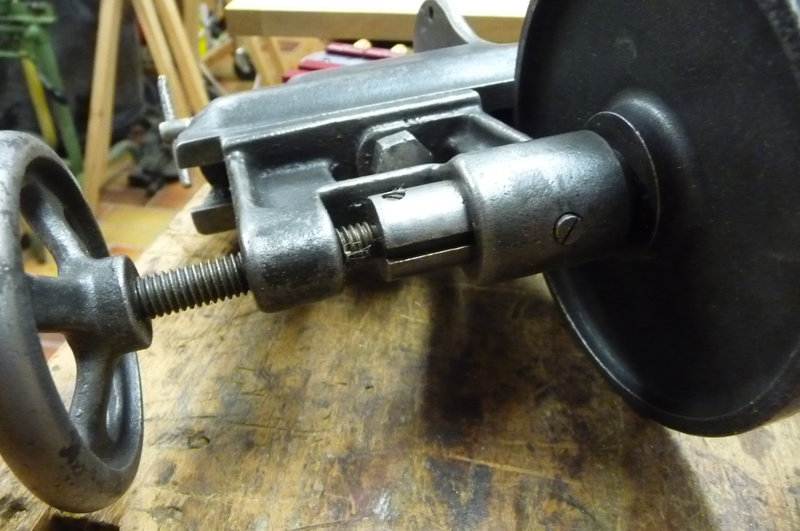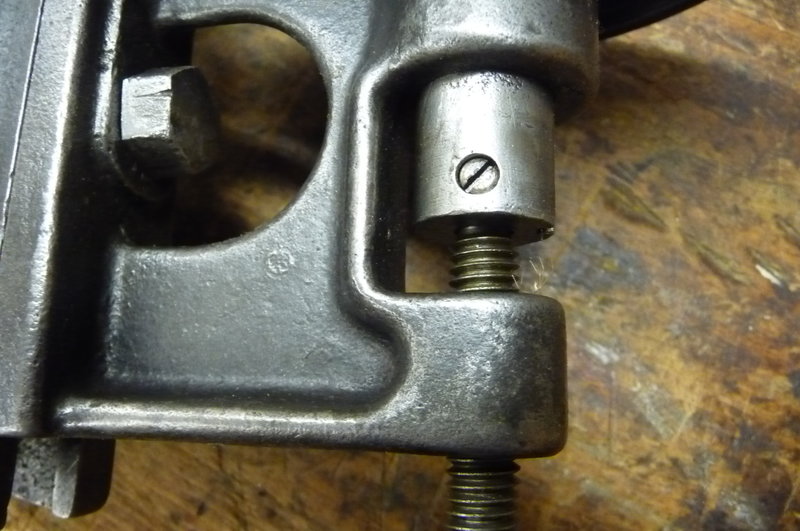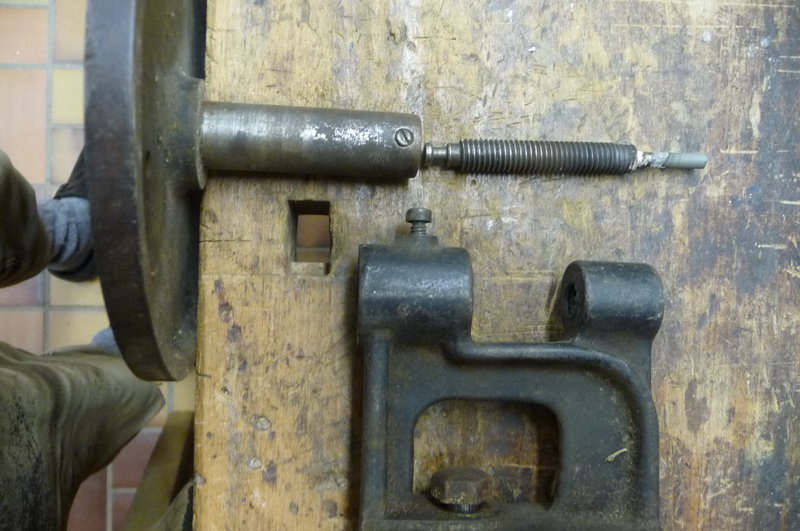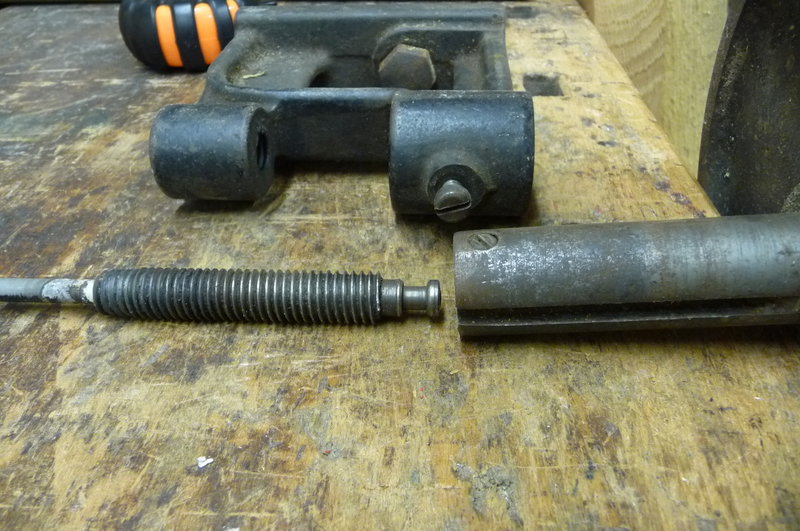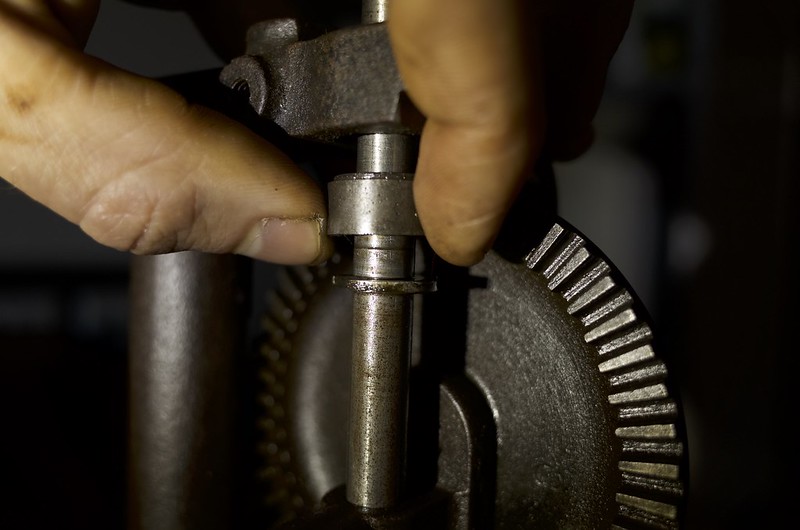Hello all,
I bought a rather sorry looking example of this bench drill from ebay - it was very rusted and all of the moving parts were seized and I am slowly making progress dismantling it.
I got a lot of help from Rhyolith's article on the same model, which shows a partially dismantled example, but I am stuck (literally) on a couple of parts.
http://www.timetestedtools.net/2016/08/30/north-brothers-yankee-no-1003/
Despite my general lack of mechanical sympathy I am afraid that if I keep up with my current levels of "persuasion" without understanding how the remaining parts go together then I will break something.
Here is the first part I am stuck with - any tips gladly appreciated!

I was able to get the table from the main drill body without too much trouble, but I am not sure what to do next. I have degunged the wheel and screw that controls the height of the table and it now moves, but I can't lower it more than 1/2 cm before it stopped by something - I wonder if it is attached to the upper part somehow?
The table is stuck fast - I found an old ad where the grub screw is shown protruding so I guess this locks the table in place. Any suggestions on how to remove the grub screw? it too is stuck fast.
cheers
Nick


I bought a rather sorry looking example of this bench drill from ebay - it was very rusted and all of the moving parts were seized and I am slowly making progress dismantling it.
I got a lot of help from Rhyolith's article on the same model, which shows a partially dismantled example, but I am stuck (literally) on a couple of parts.
http://www.timetestedtools.net/2016/08/30/north-brothers-yankee-no-1003/
Despite my general lack of mechanical sympathy I am afraid that if I keep up with my current levels of "persuasion" without understanding how the remaining parts go together then I will break something.
Here is the first part I am stuck with - any tips gladly appreciated!
I was able to get the table from the main drill body without too much trouble, but I am not sure what to do next. I have degunged the wheel and screw that controls the height of the table and it now moves, but I can't lower it more than 1/2 cm before it stopped by something - I wonder if it is attached to the upper part somehow?
The table is stuck fast - I found an old ad where the grub screw is shown protruding so I guess this locks the table in place. Any suggestions on how to remove the grub screw? it too is stuck fast.
cheers
Nick




